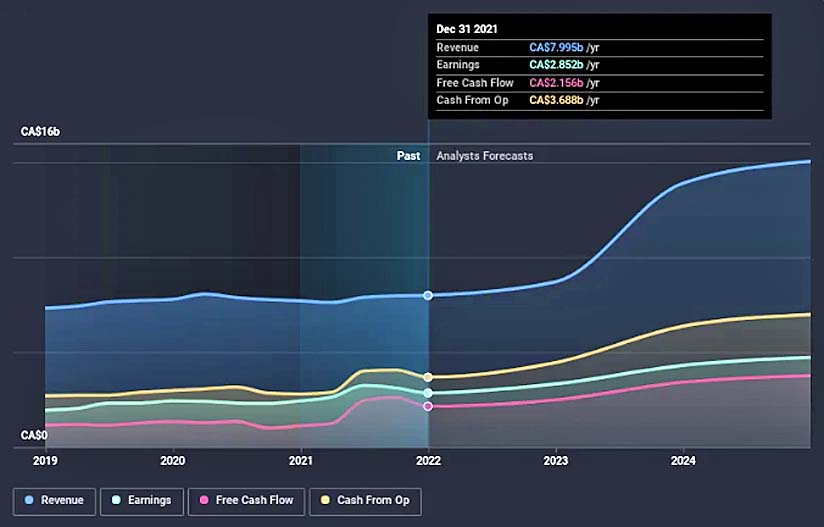
Sunnyvale California USA
New York New York USA - The big shareholder groups in Canadian Pacific Railway Limited (CP) have power over the
company.
Insiders often own a large chunk of younger, smaller, companies, while huge companies tend to have institutions as shareholders.
Companies that used to be publicly owned tend to have lower insider ownership.
CP has a market capitalization of $97 billion, so it's too big to fly under the radar.
We'd expect to see both institutions and retail investors owning a portion of the company.
Our analysis of the ownership of the company, above, shows that institutions own shares in the company.
We can zoom in on the different ownership groups, to learn more about CP.
What Does the Institutional Ownership Tell Us About Canadian Pacific Railway?
Many institutions measure their performance against an index that approximates the local market.
So they usually pay more attention to companies that are included in major indices.
CP already has institutions on the share registry.
Indeed, they own a respectable stake in the company.
This can indicate that the company has a certain degree of credibility in the investment community.
However, it is best to be wary of relying on the supposed validation that comes with institutional investors.
They too, get it wrong sometimes.
It is not uncommon to see a big share price drop if two large institutional investors try to sell out a stock at the same time.
So it is worth checking the past earnings trajectory of CP, (below).
Of course, keep in mind that there are other factors to consider, too.

Since institutional investors own more than half the issued stock, the board will likely have to pay attention to their
preferences.
It would appear that 6.0 percent of CP shares are controlled by hedge funds.
That's interesting, because hedge funds can be quite active and activist.
Many look for medium term catalysts that will drive the share price higher.
The company's largest shareholder is TCI Fund Management Limited, with ownership of 6.0 percent.
With 4.2 percent and 3.6 percent of the shares outstanding respectively, BlackRock, Inc., and Massachusetts Financial Services Company, are the
second and third largest shareholders.
Looking at the shareholder registry, we can see that 51 percent of the ownership is controlled by the top 23 shareholders, meaning that no single
shareholder has a majority interest in the ownership.
While it makes sense to study institutional ownership data for a company, it also makes sense to study analyst sentiments to know which way the wind
is blowing.
There are plenty of analysts covering the stock, so it might be worth seeing what they are forecasting, too.
Insider Ownership Of Canadian Pacific Railway
The definition of company insiders can be subjective and does vary between jurisdictions.
Our data reflects individual insiders, capturing board members at the very least.
Management ultimately answers to the board.
However, it is not uncommon for managers to be executive board members, especially if they are a founder or the CEO.
Most consider insider ownership a positive because it can indicate the board is well aligned with other shareholders.
However, on some occasions too much power is concentrated within this group.
Our data suggests that insiders own under 1 percent of CP in their own names.
As it is a large company, we'd only expect insiders to own a small percentage of it.
But it's worth noting that they own $18 million worth of shares.
In this sort of situation, it can be more interesting to see if those insiders have been buying or selling.
General Public Ownership
The general public, including retail investors, own a 21 percent stake in the company, and hence can't easily be ignored.
While this size of ownership may not be enough to sway a policy decision in their favour, they can still make a collective impact on company
policies.
Next Steps
It's always worth thinking about the different groups who own shares in a company.
But to understand CP better, we need to consider many other factors.
Take risks for example, CP has 2 warning signs (and 1 which is concerning) we think you should know about.
Debt is not well covered by operating cash flow.
Shareholders have been diluted in the past year.
Author unknown.
(there was no image with original article)
(usually because it's been seen before)
provisions in Section 29 of the Canadian
Copyright Modernization Act.
